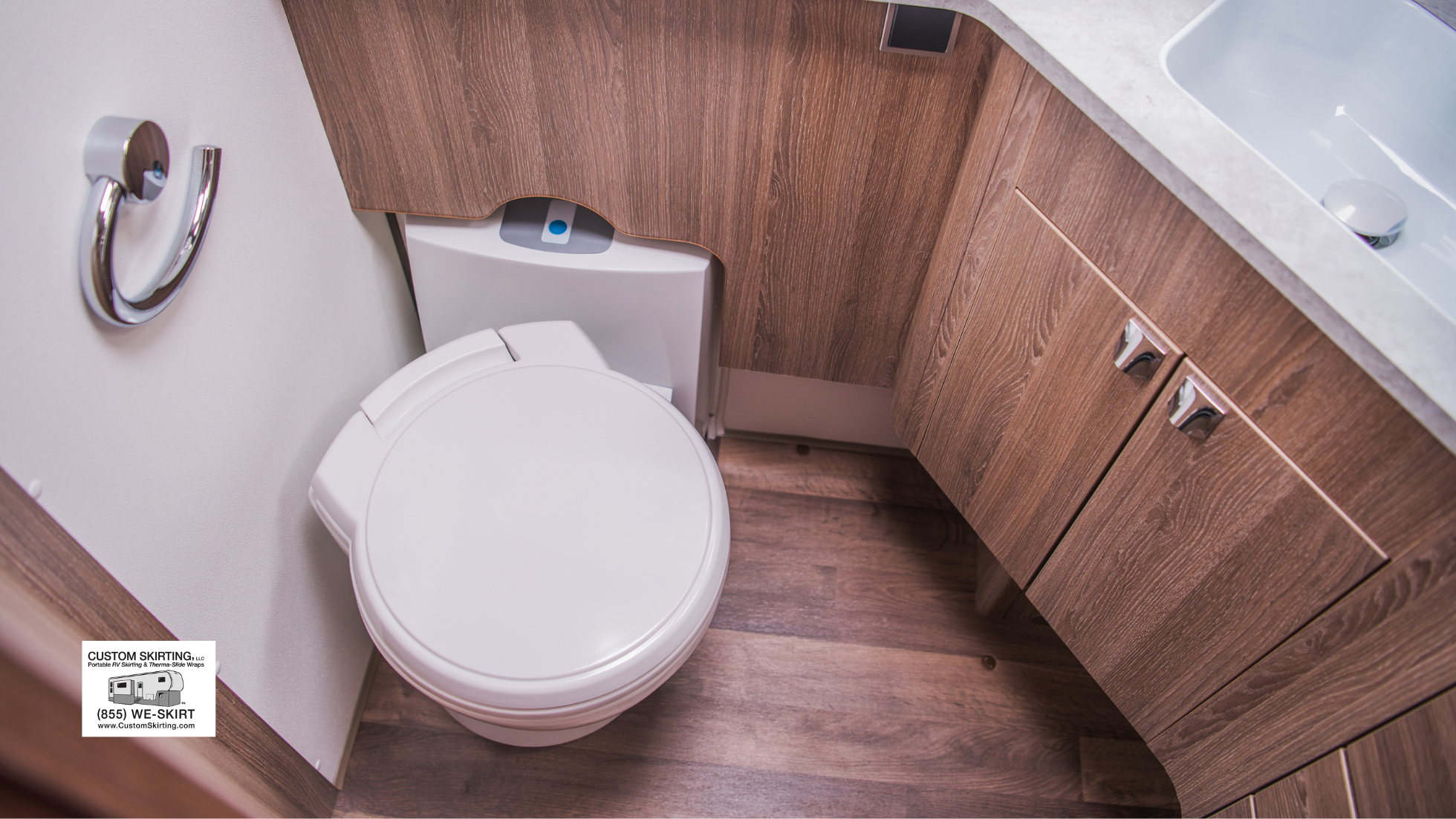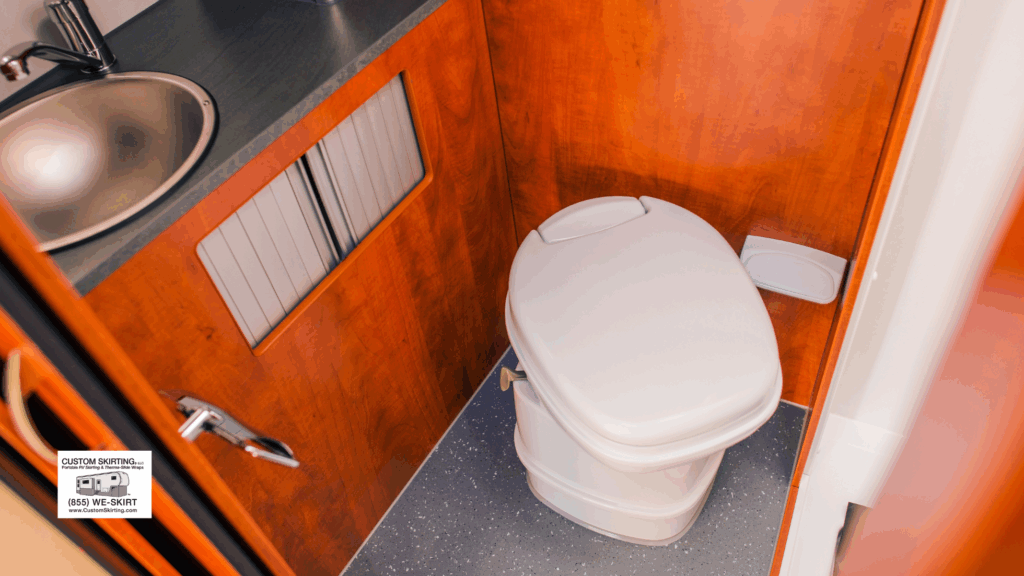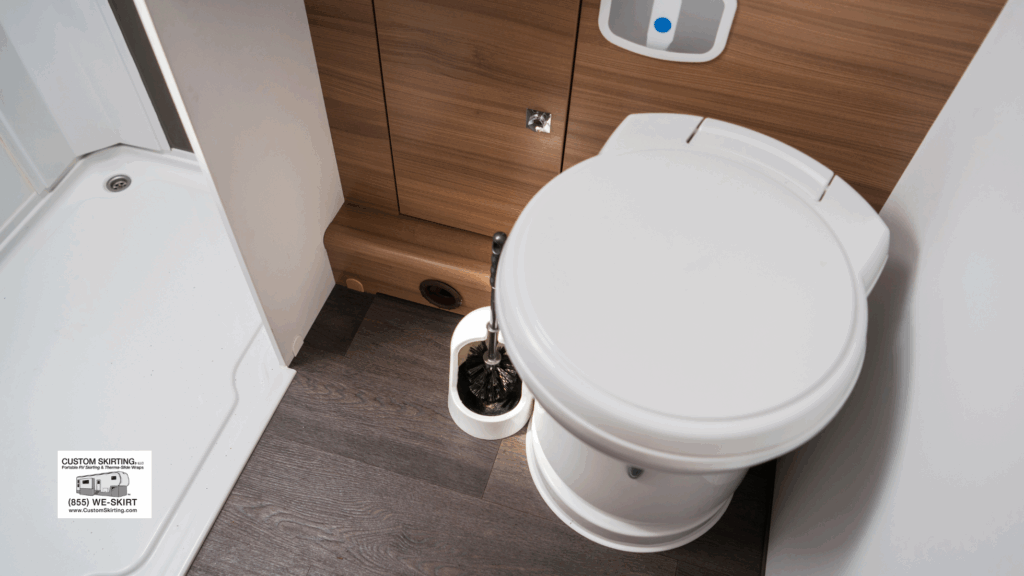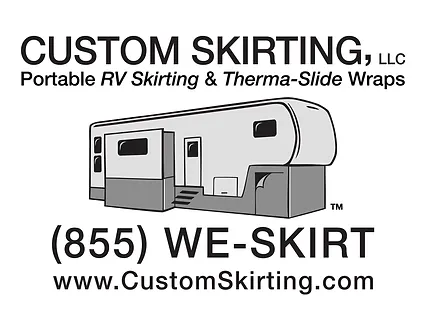
What is a Cassette Toilet and How Does it Work?
Table of contents
- Understanding Cassette Toilets
- Comparing Cassette Toilets to Other RV Toilet Options
- Advantages and Disadvantages of Cassette Toilets
- Selecting the Right Cassette Toilet
- Installation and Maintenance
- Legal and Practical Considerations
- Maximize Comfort in Your Compact RV with Custom Skirting
- Related Articles
If you’re new to the RV lifestyle or upgrading your rig, you might be asking, “What is a cassette toilet?” A cassette toilet is a compact and efficient toilet system designed specifically for recreational vehicles (RVs). It features a fixed toilet bowl connected to a small, removable waste tank (or “cassette”) that can be detached and emptied without accessing the living area of the RV. For many RVers, especially those who travel frequently or camp in remote areas, choosing the right toilet is essential to ensuring comfort and convenience on the road. So, how does a cassette toilet work, and how do cassette toilets work in practice? These questions are vital for anyone looking to make an informed decision about their RV’s bathroom setup. With multiple toilet options on the market—including blackwater systems, portable toilets, and composting toilets—it’s important to understand the pros, cons, and inner workings of cassette toilets to determine if they’re right for your travel style.
Understanding Cassette Toilets
Definition and Basic Components
A cassette toilet is a permanently installed toilet in an RV or campervan, with a removable waste tank that can be accessed from outside the vehicle. The main components include:
- Toilet Bowl – Usually made of plastic or ceramic, designed for fixed installation.
- Flush Mechanism – Can be manual (pump-style) or electric, depending on the model.
- Waste Cassette – A portable tank, typically 16 to 20 liters in capacity, used to store waste.
The cassette tank is accessible through a small door on the RV’s exterior, allowing users to remove it for disposal without bringing it inside. These tanks often feature wheels and handles for easier transport to a dump station or toilet facility.
How Cassette Toilets Work
The process is straightforward and hygienic. Here’s how cassette toilets work:
- Use and Flush – The user flushes using a manual or electric mechanism, which rinses the bowl and directs waste into the sealed cassette below.
- Waste Breakdown – Special chemicals are added to the waste tank to break down solids and control odors.
- Tank Monitoring – Most models have a level indicator that signals when the cassette is full.
- Emptying the Tank – When full, the cassette is removed via the external access door and emptied into a designated dump station or public toilet.
This setup is especially helpful for RVers who don’t want to deal with full blackwater tanks or who camp in areas without traditional dump stations.
Comparing Cassette Toilets to Other RV Toilet Options

Cassette Toilets vs. Portable Camping Toilets
When comparing a cassette toilet to a portable camping toilet, the main difference is permanence and convenience. While both have removable waste tanks, portable toilets are not fixed in place and can be moved around freely.
- Cassette Toilets: Fixed installation, more stable, greater comfort.
- Portable Toilets: Lightweight, ideal for tent campers or minimal setups.
Portable toilets usually have smaller waste capacities, making them less ideal for long trips.
Cassette Toilets vs. Blackwater Tank Systems
Blackwater systems are standard in larger RVs and consist of a toilet connected to a large blackwater tank. Here’s how they compare:
- Cassette Toilets: Smaller waste tanks (16–20L), more flexible dumping options.
- Blackwater Tanks: Larger capacity (up to 40 gallons), but require dump stations.
Blackwater systems may be preferable for families or extended camping, while cassette toilets are better suited for couples or solo travelers who move frequently.
Cassette Toilets vs. Composting Toilets
Composting toilets use natural materials to break down waste without chemicals. Here’s how they compare:
- Cassette Toilets: Require chemicals, need frequent emptying.
- Composting Toilets: Environmentally friendly, less odor, but bulkier and pricier.
If sustainability is a priority, composting may appeal to you.
Advantages and Disadvantages of Cassette Toilets
Benefits of Cassette Toilets
Toilets offer several advantages that make them an attractive choice for RVers:
- Compact Size – Ideal for small RVs, vans, and travel trailers.
- Easy to Empty – Waste tank can be removed and emptied at a variety of locations.
- Odor Control – Frequent emptying and chemical treatments reduce unpleasant smells.
- Versatile Compatibility – Works in many vehicle types and layouts.
- Regulation Compliance – Meets self-containment standards in many regions.
Limitations and Challenges
Despite their perks, cassette toilets have limitations:
- Limited Capacity – Requires frequent emptying, especially for multiple users.
- Emptying Process – Can be unpleasant for some RVers.
- Chemical Dependency – Needs special chemicals for operation.
- Maintenance Needs – Seals and valves need regular inspection and care.
Selecting the Right Cassette Toilet

Key Features to Consider
When shopping for a cassette toilet, keep the following in mind:
- Tank Size – Choose based on the number of users and expected emptying frequency.
- Flush Type – Manual pumps are budget-friendly; electric versions offer ease of use.
- Seat Comfort – Ensure the height and material match your preferences.
- Build Quality – Durable materials will last longer and withstand frequent use.
- Special Features – Look for swivel bowls, water-saving flushes, and tank indicators.
Consider how and where you plan to camp when determining which features matter most to you.
Popular Brands and Models
Some of the leading brands in the cassette toilet market include:
- Thetford: Known for durable models like the C200 and C223.
- Dometic: Offers options like the CTS4110 (19L) and Saneo (16L).
These brands are recognized for reliability, ease of use, and wide availability of parts. Many models include added convenience features like push-button flushes and LED level indicators.
Installation and Maintenance
Installation Considerations
Installing a toilet requires precision. It’s best handled by professionals, especially since:
- Service Doors – Must be installed in the RV’s exterior.
- Space Planning – Toilets need appropriate clearances.
- Ventilation – Proper airflow helps reduce odors.
While some models are suitable for retrofitting, always consult an RV technician before cutting into your RV.
Routine Maintenance and Care
Maintaining your toilet ensures longevity and hygiene:
- Clean Regularly – Use compatible toilet bowl cleaners and rinse tanks often.
- Inspect Seals – Check for wear and lubricate as needed.
- Use Proper Chemicals – Products like Thetford Aqua Kem or Aqua Rinse are designed for safe use.
- Troubleshoot Early – Fix small issues like flush malfunctions or leaks promptly.
Legal and Practical Considerations
Self-Containment Regulations
Many regions have regulations that require RVs to be self-contained, especially for freedom camping. A toilet often meets these standards due to:
- Sealed Waste Storage
- Frequent Emptying Capability
- Chemical Treatment of Waste
Being compliant allows you to camp legally in more places without needing full hookups.
Waste Disposal Etiquette and Locations
Proper waste disposal is essential:
- Use Dump Stations – Many campgrounds and rest stops have designated areas.
- Public Toilets – In some areas, you can empty cassettes into regular toilets.
- Resources – Apps like thl Roadtrip can help locate nearby facilities.
Always rinse the cassette after emptying and follow local guidelines for chemical waste disposal.
Maximize Comfort in Your Compact RV with Custom Skirting
If you’re exploring smart solutions like cassette toilets to save space in your compact RV, why not take comfort a step further? Custom RV skirting is the ultimate upgrade for year-round camping comfort. Our expertly tailored skirting system enhances insulation, blocks harsh weather, and fits your RV like a glove—no snaps, no gaps. Trusted across the U.S. and Canada, it’s built to perform in extreme conditions and travel easily when you do.
Protect your RV, insulate your space, and camp with confidence—upgrade to Custom Skirting today!
